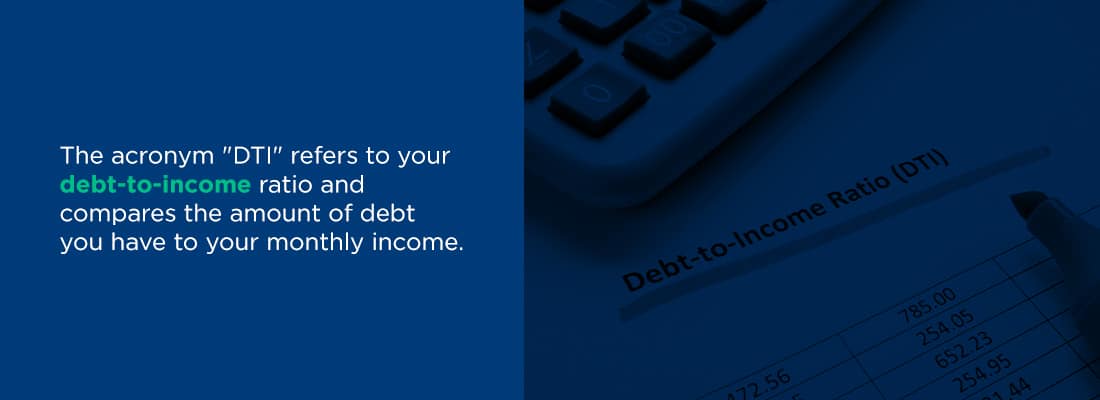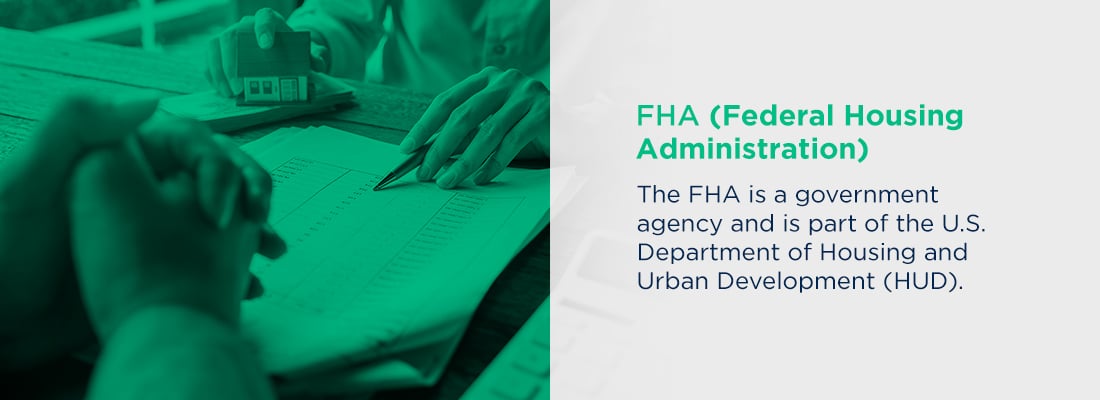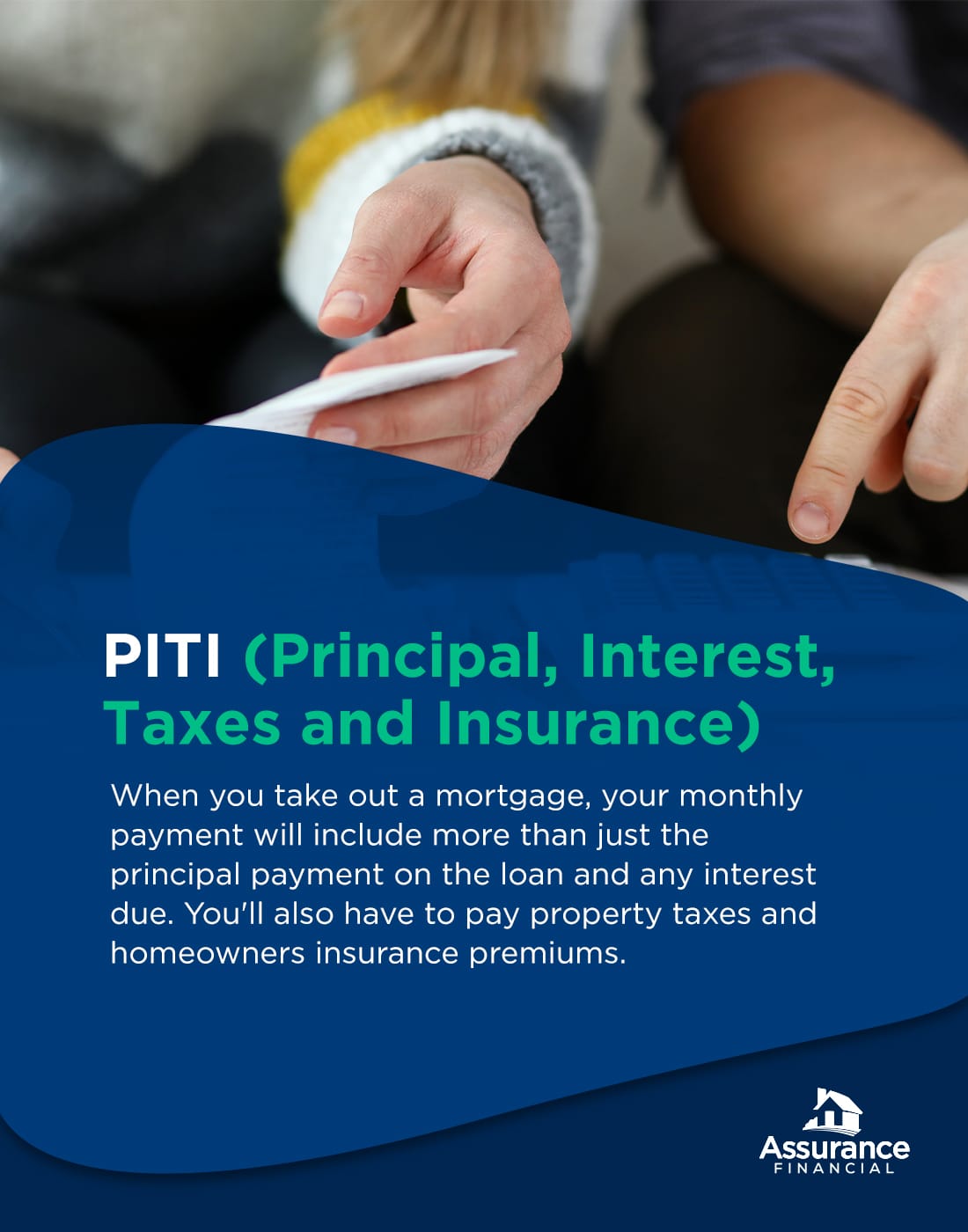When you’re in the process of shopping for a home and a mortgage, you’re likely to encounter what looks like alphabet soup. All those letters and mortgage statement abbreviations can make your head spin. Once you know what mortgage term abbreviations and acronyms stand for, you can navigate the process with ease. Check out some of the most commonly used acronyms, what they represent and where you’re most likely to see them.
Mortgage Term Abbreviations to Know
Do you know your APR from your PITI? Here’s a key to decipher commonly used mortgage and underwriting acronyms.
1. ACH (Automated Clearing House)
You have an ACH or an automated clearing house to thank for the ability to send payments electronically. Instead of writing a check to put down your earnest money, you can send it to your real estate agent using an ACH.
Even if you’re a first-time homebuyer, you’ve probably encountered an ACH before in your life. If your employer pays you via direct deposit instead of a check, you’re getting your money through an ACH. If you pay your utility bills or smartphone bill online through your bank account, you’re using an ACH.
2. AMI (Area Median Income)
Some types of home loans have AMI or area median income requirements. To qualify for those types of mortgages, your income needs to fall below a certain threshold. For example, the Home Possible® mortgage requires an income below 80% of the AMI in a particular census trace. Loans with an AMI limit are typically designed to help people who would otherwise not qualify for a mortgage to purchase a home.
3. APR (Annual Percentage Rate)
The annual percentage rate or APR is the interest rate on a mortgage expressed as a yearly rate. One way to understand APR is the cost of borrowing money. APR includes the interest rate charged on the mortgage, as well as the cost of fees, such as origination fees and broker’s fees.
You use a mathematical formula to determine the APR on a mortgage. First, you add the amount of interest you’ll pay over the loan term and any fees charged. You divide that sum by the total mortgage amount. Then, you divide that by the number of days in the loan term. Next, multiply the result by 365, then multiply that result by 100 to get the APR percentage. The lower the APR, the more affordable the mortgage is and the less you’ll pay over the life of the loan.
4. ARM (Adjustable-Rate Mortgage)
The interest rate you pay on your home can change at certain points during the life of the loan. If you have a mortgage with a rate that changes, you have an adjustable-rate mortgage or ARM. When your rate changes depends on the type of ARM you have. For example, a 5/1 ARM has an introductory rate that is valid for five years. After the fifth year, the rate can change based on market conditions. From then on, the rate will adjust every year.
An ARM can be appealing if interest rates are high and might drop in the future. When interest rates are low, there is a chance the rate on an ARM will increase over time, increasing the cost of the mortgage.
5. ATR (Ability to Repay)
No one wants to take out a mortgage that will be difficult to pay back. A lender particularly doesn’t want to lend more than a borrower can repay, as the lender risks losing a significant sum of money. Lenders use the ability to repay or ATR rule to determine whether a borrower can repay their mortgage.
To calculate ATR, a lender looks at a borrower’s assets, income, monthly costs, employment history and credit history. To abide by the ATR rule, a lender needs to make a good faith and reasonable determination. They also can’t use a teaser or introductory rate to determine a borrower’s ATR.
6. CD (Closing Disclosure)
When you’re about to close on your home, your lender will give you the CD or closing disclosure. The CD is a five-page document listing all the details and costs of your mortgage. It will have your name, the details of your loan, a list of loan costs, a list of taxes and other costs and loan disclosures. The CD also tells you how much cash you need to bring to closing and lists all the transactions that have taken place, such as any credits from the seller.
7. C to P (Construction to Permanent Loan)
If you are building your home, you typically need to first take out a construction loan, not a traditional mortgage, to fund the cost of building the house. A construction loan is typically a short-term loan that only pays for the cost of building a house. Once the home is built, you take out a separate mortgage on the property, using the new home as collateral. A construction to permanent loan or C to P turns into a standard mortgage once construction is completed.
Another name for a C to P is a single-close loan. You may also see this acronym written as C2P, C/P or C-to-P.
8. DTI (Debt-to-Income)
The acronym “DTI” refers to your debt-to-income ratio and compares the amount of debt you have to your monthly income. If you earn $5,000 per month and have $2,500 worth of loan payments each month, your DTI is 50%. DTI is one of the factors lenders use to calculate your ability to repay your mortgage. If DTI is high, a lender might be hesitant to approve you for a mortgage. Generally speaking, the lower your DTI, the better. Usually, the upper DTI limit for a qualified mortgage is 43%.
9. ECOA (Equal Credit Opportunity Act)
Thanks to the Equal Credit Opportunity Act or ECOA, you can’t be refused a mortgage on the basis of your sex, age, marital status, race, religious beliefs, color, national origin or need for public assistance.
The ECOA also prevents lenders from offering you different loan terms based on the previously mentioned factors. For example, a lender can’t give you a lower interest rate because you are a woman or increase your rate because you are over 50 years old. The ECOA also prevents lenders from asking about your plans for having children or not.
10. EMD (Earnest Money Deposit)
You’ve found the house that’s the “one,” you made an offer and it was accepted. To show the seller you’re serious about the purchase, you need to put down earnest money. An earnest money deposit or EMD is a percentage of the home’s sale price, usually about 1 to 3%. If all goes well with the process, the EMD is applied to the final price of the home.
If the house doesn’t pass inspection or the sale doesn’t go through due to an allowable contingency, the buyer gets the EMD back. But if the buyer cancels the sale or backs out for another reason, the seller gets to keep the EMD. In any case, the EMD is held in an escrow account until the sale is finalized.
[download_section]
11. FAIR (Fair Access to Insurance Requirement)
A Fair Access to Insurance Requirement (FAIR) Plan is a type of insurance policy designed to provide coverage to homeowners whose property is considered high risk. FAIR is a state-mandated program and usually costs more than a private insurance policy. For some homeowners, a FAIR Plan is their only option.
With a FAIR Plan, multiple insurance providers offer coverage, spreading the risk out in case something happens in the home. How much coverage you get with the plan depends on your state. Note that not every state offers access to FAIR Plans.
12. FHA (Federal Housing Administration)
The Federal Housing Administration or FHA offers mortgage insurance protection on FHA loans. The FHA is a government agency and is part of the U.S. Department of Housing and Urban Development (HUD). It’s a self-funded agency, generating income from the mortgage insurance it offers. Since the agency was created in 1934, it has provided insurance protection for more than 46 million home loans.
FHA loans make it possible for buyers who otherwise wouldn’t qualify for a mortgage to purchase a home. Mortgages made under the FHA program come from private lenders but have the agency’s guarantee in case the borrower defaults.
APPLY TODAY13. FICO (Fair Isaac Corporation)
When a lender pulls your credit score, you might hear them mention your FICO score. FICO stands for Fair Isaac Corporation, an analytics company that developed the formula used to calculate FICO scores. Although there are other types of credit scores available, FICO claims to be the most widely used. Your FICO score provides a lender with an idea of your borrowing history and how likely you are to repay your loan.
14. FMV (Fair Market Value)
A home’s fair market value or FMV is the price it would sell for under normal conditions. FMV isn’t necessarily the sale price of a home, as other conditions can affect its final price. For example, if the house is in an in-demand area, a bidding war might push its final price above the FMV.
Municipalities often use FMV to determine the tax rate on a home. A home with a high FMV will have higher property taxes than one with a lower FMV.
15. FRM (Fixed-Rate Mortgage)
A fixed-rate mortgage or FRM is the inverse of an ARM. The interest rate on an ARM can change on a particular schedule depending on current rates. But the interest rate on an FRM will be the same throughout the loan’s term.
With an FRM, your mortgage payment will remain constant for the life of your loan. If you happen to apply for your mortgage when rates are low, you won’t have to worry about the interest rate increasing as time goes on. You also have predictable payments throughout the duration of your loan.
16. FSBO (For Sale by Owner)
While many sellers choose to work with a real estate agent when listing and selling their property, some prefer to do things on their own. With a for sale by owner or FSBO property, the seller assumes all responsibility for the transaction. Not working with a real estate agent means they don’t have to pay the agent’s commission, but they could also potentially price their home too low or make a mistake with the paperwork.
17. GFE (Good Faith Estimate)
A lender provides a borrower who is taking out a reverse mortgage with a good faith estimate or GFE. The goal of a GFE is to help borrowers understand the cost of the reverse mortgage and let them compare mortgage offers.
18. HELOC (Home Equity Line of Credit)
Home equity is the difference between the amount a person owes on their mortgage and the value of their home. If a person has positive equity and needs cash for a renovation project or other reason, they can open a home equity line of credit or HELOC and borrow against their equity.
A HELOC is similar to a credit card. There’s a limit, usually no more than 80% of the equity in the home. A person can borrow up to the limit, then repay the loan and borrow more. HELOCs typically have a draw period, during which you can borrow against the property, and a repayment period.
19. HOA (Homeowners Association)
Some properties, such as condos and homes in subdivisions, have a homeowners association or HOA attached to them. When you buy a property with an HOA, you automatically become an HOA member once you close on the home.
HOAs set rules for each property and conditions homeowners need to meet. For example, an HOA might require homeowners to complete certain maintenance tasks annually or might dictate what color the exterior walls of a house can be. Usually, when you buy a property with an HOA, you need to pay an HOA fee, usually monthly.
20. HUD (Housing and Urban Development)
The U.S. Department of Housing and Urban Development or HUD is a cabinet that’s part of the executive branch of the U.S. government. President Johnson created HUD in 1965 as part of the “War on Poverty.” HUD aims to enforce housing laws and address the country’s housing needs. Its programs include the FHA mortgage insurance program, subsidized housing for low-income individuals and families and Section 8 rental vouchers.
21. LE (Loan Estimate)
When you apply for a mortgage, a lender will provide you with a three-page loan estimate or LE. The lender needs to provide you with an LE within three days of getting your application. An LE gives you useful information, including the details of the monthly payment amount, the interest rate and anticipated closing costs. It’s not a final document but can provide you with a general idea of whether you can afford a mortgage at the moment.
22. LT (Loan Term)
The loan term or LT is the length of time you have to pay back a loan. For mortgages, loan terms can be anywhere from five years to 30 years. The longer the LT, the smaller the monthly payment, but the more you end up paying in interest over the life of the loan. Loans with shorter terms also usually have lower interest rates than longer-term loans.
Loan terms can also refer to conditions in your mortgage about borrowing money. Terms can include details like interest rates, penalty fees or special conditions.
23. LTV (Loan-to-Value)
The loan-to-value ratio or LTV compares the principal of a loan to the value of a home. The higher the LTV, the higher the risk for a lender.
For example, if your home’s value is $300,000 and your mortgage is $270,000, you have an LTV of 90%, which a lender might view as a risky loan. In contrast, if your mortgage is $150,000 on a house worth $300,000, your LTV falls to 50%. You can reduce your LTV by making a bigger down payment when you buy a house. With a larger down payment, you are more likely to get a lower interest rate and may not have to pay mortgage insurance.
24. MIP (Mortgage Insurance Premium)
If you take out an FHA loan, you’ll have to pay a mortgage insurance premium or MIP on top of your principal and interest payments. You’ll need to make an upfront MIP payment and will also have an annual MIP, which is broken up into 12 monthly payments. The annual MIP is for the life of the loan.
Don’t confuse MIP with the acronym “PMI,” or private mortgage insurance. Only FHA loans have MIP.
25. PITI (Principal, Interest, Taxes and Insurance)
When you take out a mortgage, your monthly payment will include more than just the principal payment on the loan and any interest due. You’ll also have to pay property taxes and homeowners insurance premiums. In the mortgage world, these terms are bundled together as principal, interest, taxes and insurance or PITI for short.
Knowing the PITI on your mortgage gives you a good idea of whether you can afford the monthly payments or not. A mortgage’s principal and interest may be $1,000 per month, which might work with your income. But if you add the taxes and insurance due, the total PITI might be $1,500, which could be more of a stretch.
26. PMI (Private Mortgage Insurance)
You can take out a conventional mortgage with a down payment of less than 20%. When you put down less than 20%, you’ll most likely need to pay a private mortgage insurance or PMI premium. PMI offers the lender some protection in case you default on the home loan.
PMI and MIP aren’t the same, although they are similar. When you have a conventional loan with PMI, you can remove the mortgage insurance after your LTV reaches 80%, which would be the equivalent of you putting down 20%. If your home value increases quickly, you might be able to refinance your mortgage to remove the PMI sooner than anticipated.
27. QM (Qualified Mortgage)
A qualified mortgage or QM meets certain requirements and is generally considered a stable, lower-risk loan. A key feature of a QM is that the borrower has the ability to repay the loan. When issuing a QM, the lender must make sure the borrower’s DTI isn’t more than 43%. QMs can’t have interest-only payments or allow for negative amortization, meaning the value of the principal can’t increase over time.
28. RD (Rural Development) Loan
A United States Department of Agriculture (USDA) RD loan is designed to help people buy homes in rural or suburban areas. Several types of USDA loans are available, including mortgages offered directly by the USDA and mortgages guaranteed by the USDA, similar to how the FHA guarantees FHA loans. To qualify for a USDA loan, you need to meet income requirements. The house also needs to be in a designated rural or suburban area.
29. TILA (Truth in Lending Act)
Thanks to the Truth in Lending Act or TILA, a lender needs to provide you with the details of a loan’s cost so you can shop around and compare your options. You also have the option of backing out of a loan offer within three days under this act. The TILA also offers protections for credit cards and other forms of credit, not just mortgages.
30. VA (Veterans Affairs) Loan
A Veterans Affairs or VA loan is a mortgage for people who are currently serving in the armed forces or who have in the past. Surviving spouses of veterans can also qualify for VA loans. The VA guarantees part of the loan, so a borrower who might not otherwise qualify for a mortgage can get more favorable terms from a private lender. One notable feature of many VA loans is that they don’t require a down payment. VA loans also don’t have a MIP or PMI payment.
Apply for a Mortgage With Assurance Financial Today
Ready to buy a home? You can apply for a mortgage with Assurance Financial in just 15 minutes. Start your application today and remember we’re here for you if you have any questions about mortgage acronyms or abbreviations.
Sources:
- https://www.consumerfinance.gov/ask-cfpb/what-is-an-ach-en-1065/
- https://www.fdic.gov/consumers/community/mortgagelending/guide/part-1-docs/freddie-home-possible.pdf
- https://www.consumerfinance.gov/ask-cfpb/what-is-the-difference-between-a-mortgage-interest-rate-and-an-apr-en-135/
- https://www.investopedia.com/terms/a/apr.asp
- https://files.consumerfinance.gov/f/documents/cfpb_charm_booklet.pdf
- https://www.investopedia.com/terms/1/5-1_arm.asp
- https://www.consumerfinance.gov/rules-policy/final-rules/ability-to-pay-qualified-mortgage-rule/
- https://www.consumerfinance.gov/owning-a-home/closing-disclosure/
- https://www.investopedia.com/terms/c/construction-mortgage.asp
- https://www.consumerfinance.gov/ask-cfpb/what-is-a-debt-to-income-ratio-why-is-the-43-debt-to-income-ratio-important-en-1791/
- https://www.consumer.ftc.gov/articles/0347-your-equal-credit-opportunity-rights
- https://assurancemortgage.com/applying-for-home-loan-pregnant/
- https://www.investopedia.com/terms/e/earnest-money.asp
- https://www.thebalance.com/fair-plan-policies-2645392
- https://www.hud.gov/federal_housing_administration
- https://www.hud.gov/program_offices/housing/fhahistory
- https://assurancemortgage.com/fha-loans/
- https://www.investopedia.com/terms/f/ficoscore.asp
- https://www.investopedia.com/terms/f/fairmarketvalue.asp
- https://www.fdic.gov/resources/consumers/consumer-assistance-topics/mortgages.html
- https://www.investopedia.com/terms/f/for-sale-by-owner.asp
- https://www.consumerfinance.gov/ask-cfpb/what-is-a-good-faith-estimate-what-is-a-gfe-en-146/
- https://www.consumer.ftc.gov/articles/0227-home-equity-loans-and-credit-lines
- https://www.investopedia.com/terms/h/hoa.asp
- https://www.hud.gov/about/qaintro
- https://www.hud.gov/topics/housing_choice_voucher_program_section_8
- https://www.investopedia.com/loan-terms-5075341
- https://www.investopedia.com/terms/l/loantovalue.asp
- https://www.hud.gov/program_offices/housing/comp/premiums/ufmain
- https://www.consumerfinance.gov/ask-cfpb/what-is-piti-en-152/
- https://www.consumerfinance.gov/about-us/blog/how-decide-how-much-spend-your-down-payment/
- https://www.consumerfinance.gov/ask-cfpb/what-is-a-qualified-mortgage-en-1789/
- https://assurancemortgage.com/usda-loans/
- https://assurancemortgage.com/everything-you-need-to-know-about-usda-rural-loans/
- https://www.occ.treas.gov/topics/consumers-and-communities/consumer-protection/truth-in-lending/index-truth-in-lending.html
- https://assurancemortgage.com/va-loans/
- https://assurancemortgage.com/5-things-know-va-loans/
- https://assurancemortgage.com/apply/
- https://assurancemortgage.com/loan_process/










